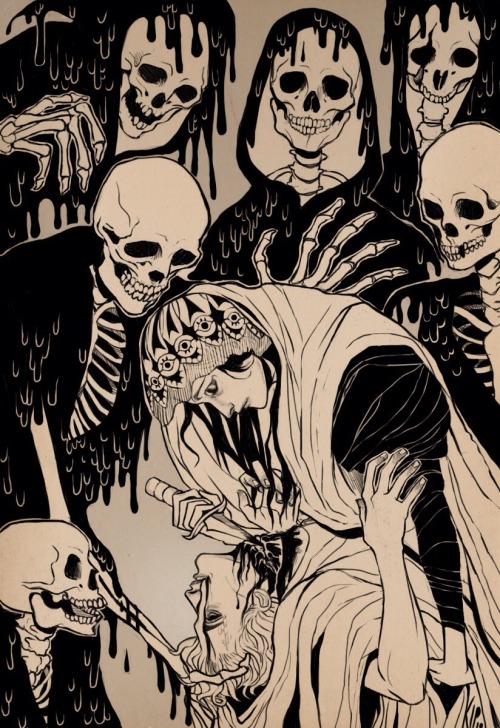Dagger - Tumblr Posts
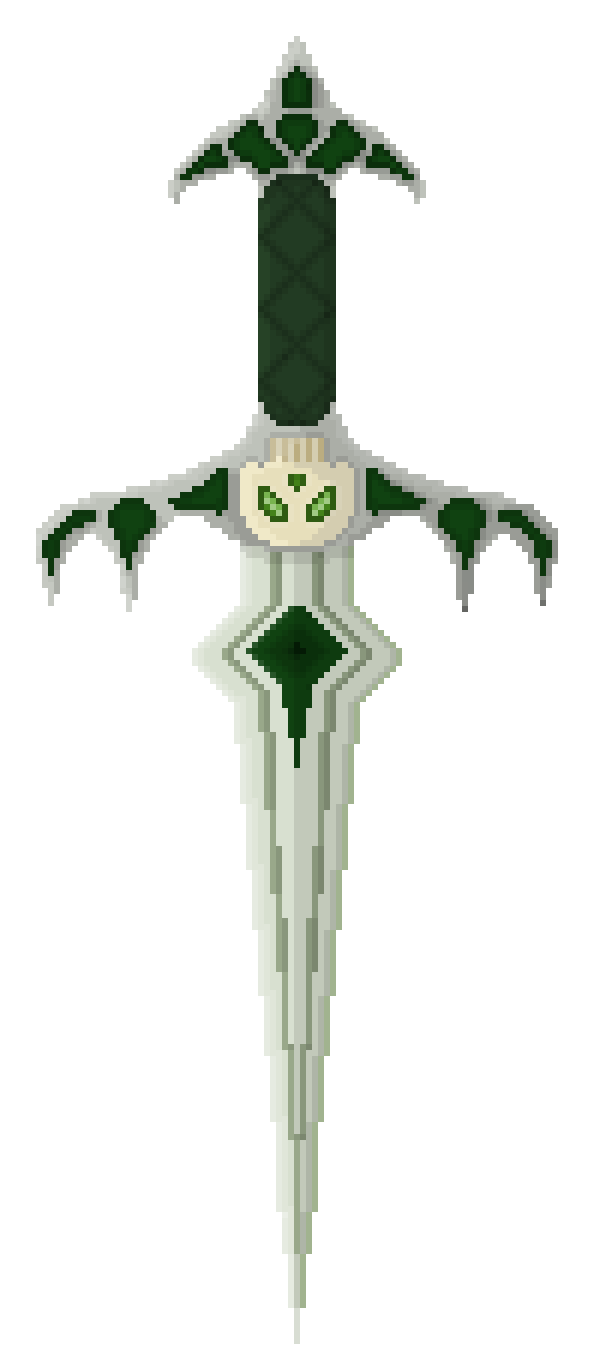
one of many daggers i drew. if you wanna see them all you will have to check my pixelart


I see no difference
Female pirate captain

“Pirate Captain——parrot of the three sisters”
Artwork by mist XG
Some cuties I been working on and my ass cause why not



My latest swords 🌿🐍💛



“Happy” San Valentines 💔❤️🩹
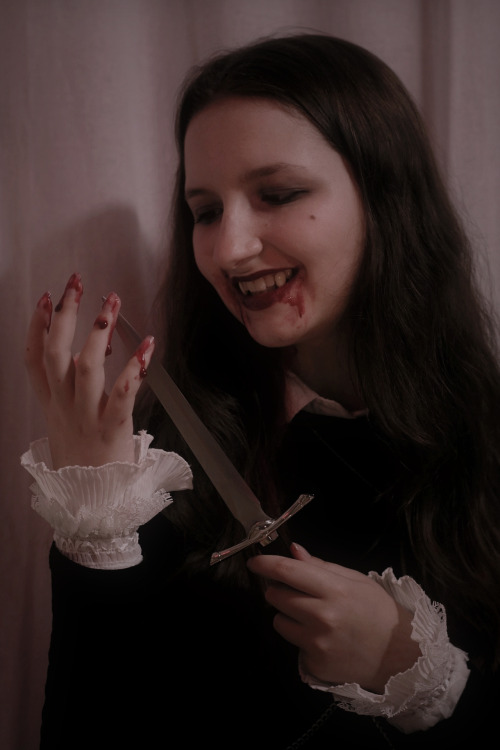
Night with a Vampire

You got yourself into trouble, darling.

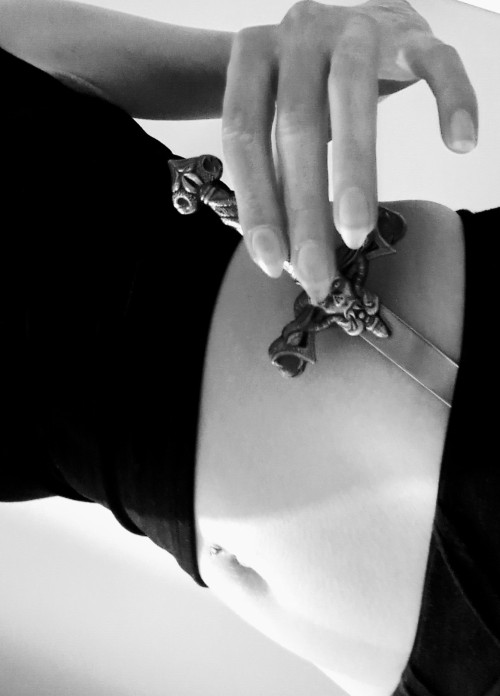


I'll drink your blood and eat your skin

Presenting Ashra, the bad-ass half-orc blood hunter! Commissioned by one of Charredlore’s adventurers.
"Hailing from the somewhat inhospitable swampland near Cormanthor, this half-orc has taken up her steel to rid the world of monsters... if people can pay her fees, that is. As an order of the mutant blood hunter, she has undergone rigorous training and had her body modified to become more resilient, swifter and better able to track her quarry. Her social skills are somewhat lacking, if not to say almost non-existent. But as long as she's getting paid and her best friend (her horse Ludwig) remains at her side, she'll cheerfully tackle any mission that she can get her hands on."
~Thank you Charredlore for providing me with some great character lore ;)!
My type is women with weapons, men written by women and anyone wearing eyeliner.
Simplicity
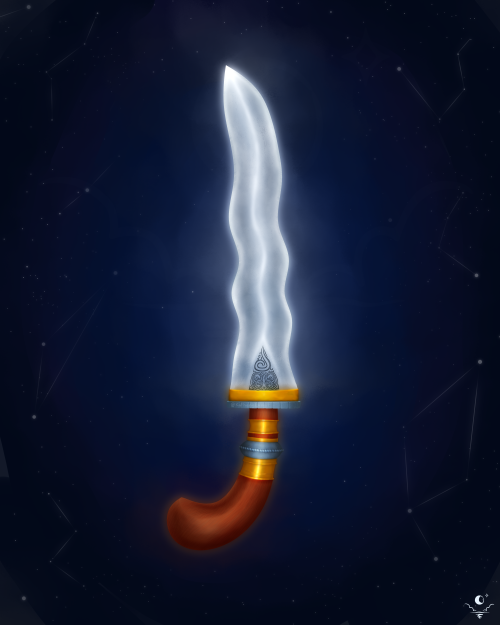
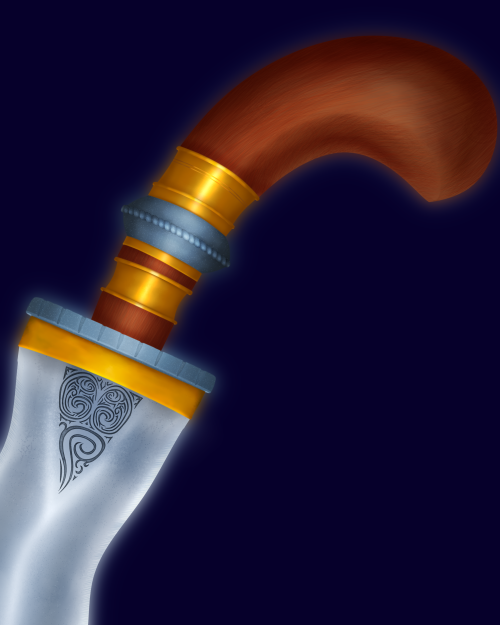
Presence is not strength. Complexity is not intelligence, audacity is not courage, grandeur is not beauty, gentility is not virtue. A piece of steel need not be forged into anything fancy- it only has to be sharp- and thereafter the blade would hold power over life and death. Could you imagine what you might forge of your own mettle?
Tawen
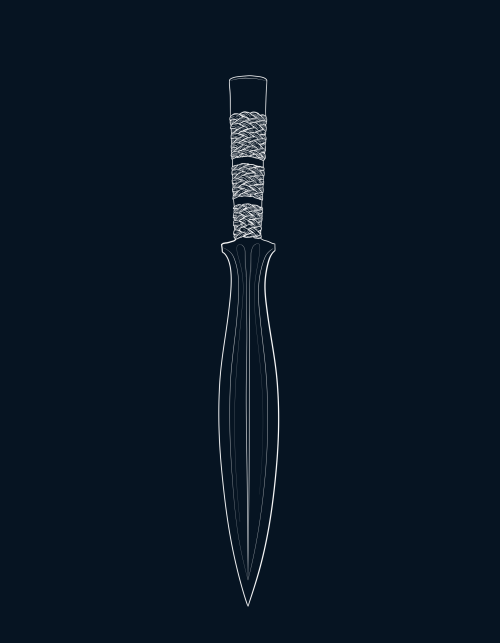
The metal fell from the space between stars, cold as the peaks on which it landed, black as the night on which it arrived.
Our finest craftsmen accepted it the same night the skies gave it birth, and labored in their cold forges in the dark under the watch of a thousand blinking eyes.
And from it, they carved out a blade, one that would serve as well in hand as it would at the tip of a spear. That could hunt to feed, that could carve to shelter, that could hack to warm, that could bleed to protect. Black and cold and smooth and glassy as a shard of frozen night.
The strangeness began when it met the light of day.
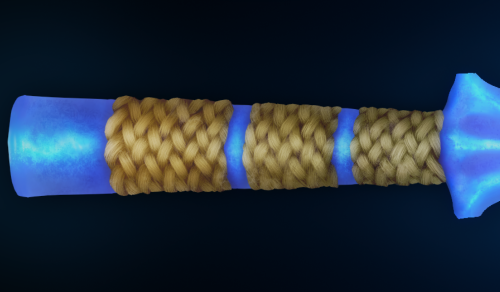
At first it was reflection- a warrior's eyes in gleaming steel.
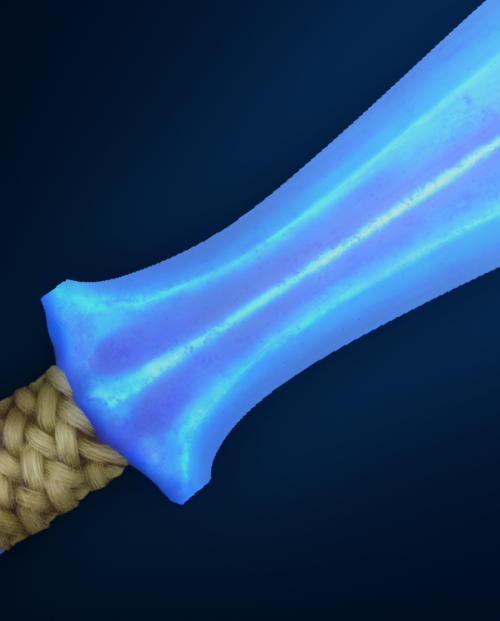
Then refraction- the sunlight playing a finger's depth beneath the surface of a lake.
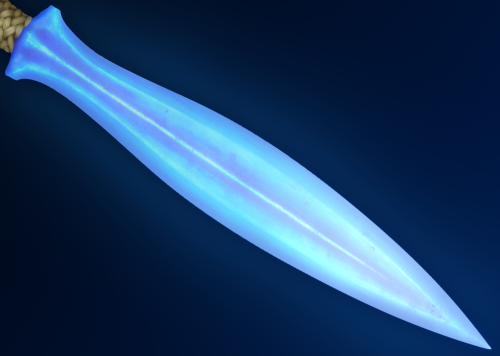
Then a glow- lights devoid of fire who dance where other secrets dwell.
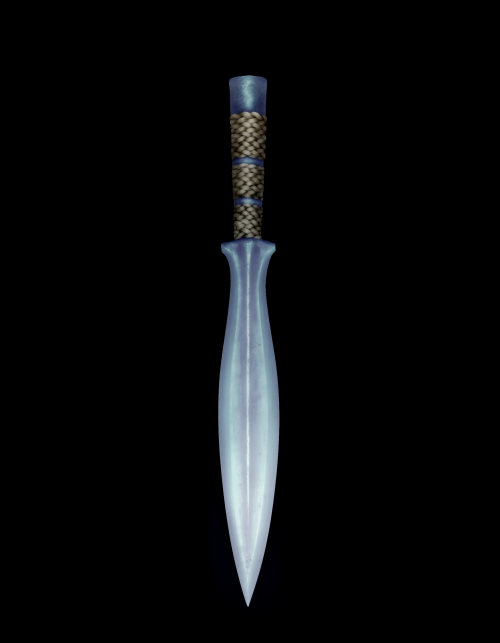
The sun was slow to rise in the mist between the pines, chill and friendly winds through the terraces, clouds exploding silently above where fading stars yet twinkled. And the new creation watched, and marveled.
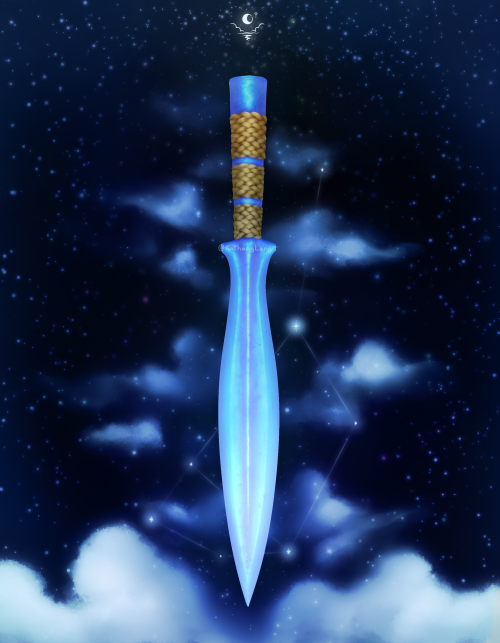
And forevermore, that shard of night glowed the color of a morning sky.
The First Blade: Balaraw - Winged Dagger
I realize I haven't been explicit about it on here yet (mostly because I'm not the best at keeping all my social media profiles up to date), but I am involved in the development of a Tabletop Roleplaying Game It's called Gubat Banwa- a TTRPG based around tactical grid combat, contemplative war drama, and high-flying martial arts, all of which taking place in an unapologetically Southeast Asian-inspired fantasy setting, developed by @makapatag with art direction by @villain-returns. Initially I developed the script that is used in the gamebook and diegetically in the setting- called Kasuratan- but I'll talk about that elsewhere.

With the Kickstarter launch imminent, I thought I'd do a bunch of Twitter X threads on a bunch of weapons I've drawn for the game counting down the final week before the launch. Then I thought: "Why aren't I posting these on tumblr also, at least I wouldn't lose my mind over character counts over here"- so here we are. These were supposed to be posted as Swordtember drawings, but then the KS launch got moved to October. Most of these blades are of Philippine make, since that is where my knowledge-base is and what I'm comfortable enough to share knowledge about. I thought it'd be nice to share a bit of blade knowledge from some of the cultures that inspired the setting. Without further ado, let us begin with the BALARAW.

Also known as a "winged dagger", it is characterized by its unique shape, consisting of a short leaf-shaped blade driven with the tang out into a hilt with two distinct protrusions, creating three prongs on the back with the tang included.

(Photos from an exhibit at The Met)
They may be held at the hilt like a regular knife, or they may be held in a manner not too dissimilar from how our neighbors in Southeast Asia hold keris. One may imagine it like a "push dagger" for lack of other reference points. It might be likened to the katar as well, in some sense.


(Sketches by the Gubat Banwa Art Director himself) Nowadays, the blade is frequently attributed to the People of the Upstream- the Mandaya group of peoples- though they would have seen much wider use in their day, likely also spanning across what is now the Visayas region of the Philippines.

(Modern rendition by Panday Keiven Tolentino of Itak Mindoro, Photo by Ramon H. Bathan) Something I've noticed from looking at Philippine blades all the time is that symmetrical, double-edged blades like these are rare, here. Blades that lend themselves more to stabbing than anything else aren't very prevalent either, and blades that do not- at first glance- appear to be made with tool use/foliage clearing/farmwork in mind don't make up the majority of specimens. The balaraw is unique in several different respects, and any self-respecting warrior Kadungganan of Gubat Banwa's Sword Isles would do well to mind its bite. The weapon makes an appearance in Gubat Banwa in the hands of the Beast Hunter- one of the many Disciplines ("character classes") whose techniques your character can learn in-game.
The Gubat Banwa Kickstarter launches in 7 days! Check it out here:

We'd appreciate any and all help in getting the word out. Support an independent TTRPG made by a team from the global south, looking to make waves through a fantasy setting where the Southeast Asian inspirations takes center stage!
The Second Blade: Diplata - Extinct Bolo
Continuing the countdown to the launch of the Gubat Banwa Kickstarter coming up on the 10th of October- 6 days to go! Gubat Banwa is a tactical war-drama TTRPG set in the Sword Isles, a fantasy setting inspired by Southeast Asian cultures and folklore.

To promote its launch, I'll be posting some of the weapons I've been drawing for the game every day until the campaign kicks off in earnest. These were meant to be Swordtember entries, pardon the lateness I suppose. 2/7 blades so far, let me introduce you to the DIPLATA.

The diplata is a short-to-mid-length blade with a distinct handle, with most specimens sporting a horn-like protrusion facing the same side as the edge.

The blade shape itself I feel is something common across most toolblades in the Philippines, not much longer than one's forearm with a more-or-less rounded out tip- though the diplata seems a bit wider than most. I would say the most unique features definitely lie in the shape of the hilt, and the circular guard. Most Philippine blades don't have anything in the form of hand protection, so a wide guard like this stands out.

This one was a little difficult to find photo references for, as apparently they're quite rare. Some blade scholars call it an "extinct" blade, meaning those who traditionally forge authentic ones supposedly aren't around anymore.

(Photo from Victor Balaguer's museum near Barcelona; Diplata on the blades hanging on the wall, the two next to the rightmost blade) "Traditional" blades refer to those made by the same people to whose culture a blade belongs. To illustrate in the simplest terms, a katana made by a traditional Japanese swordsmith would count as a traditional blade. A messer made by a traditional German blacksmith would count as a traditional blade. I'm sure there's more internal nuance there, but that's the quickest reference point I could come up with. Take note however that the Philippines is composed of many, many different cultures who all happen to exist in the same archipelago with varying levels of overlap- there is no singular, unifying blade culture, so categorizations like "Traditional" and "Modern" (often referring to modern reproductions) aren't always as exact as convenience may demand. In particular, material exchange between cultures makes a mess of this categorization, not just because the blades themselves could get traded (or stolen or lost) and physically make their way to other places beyond the imaginary borders of their "homelands", but because the smiths themselves (or their knowledge and techniques) may travel around. Smiths in different places may also see blades from different cultures that they might feel like imitating or emulating in some way- that's how certain Philippine blades obtained D-guards- but that's a story for another time. The diplata is oft-attributed to the Aeta peoples, specifically those who come from Mt. Pinatubo in Zambales. Not much confusion as to whose culture these blades belong.

It is a little disheartening that most of the refs I could find were photos from foreign museums and loose images in books and blade forums. I will not speculate here as to how these blades ended up in these places, but it isn't hard to guess.

(Image from a Spanish museum)

(Image from Philippines, Early Collections, Museum of Ethnologie Vienna)

(Image from The Philippine Journal of Science Volume 81) I'm not a hardcore blade scholar, but even I recognize how inseparable blades are from the myriad cultures of the Philippines. I'm forever thankful to the random communities of blade enthusiasts who dedicate a not-insignificant portion of their time (and wallets) to supporting local artisan blacksmiths to grow their collections, and keeping track and tracing which blades came from which places and peoples. Our blade cultures are alive and still developing, but they could still use a little help sometimes, just so we don't lose them.

(Photo from the collection of Zel Umali) In any case- while it's not exactly a scholarly work in the academic sense- part of Gubat Banwa's violence is pushing a fantasy setting of our own making, as seen by our own eyes, as told on our own terms. This is no foreign museum; This time, SEAsian cultures take center stage.
The Gubat Banwa Kickstarter launches in 6 days! Check it out here:

It would be a huge help to this very small team from the global south if you could help us get the word out! We straight up can't afford to advertise on the same scale as bigger players in the field, so we're relying heavily on word of mouth. You can find out more about the game on its itch page.
The Third Blade: Hinalung - Handheld Speartip
Five days left to go before the launch of the Gubat Banwa Kickstarter campaign! Gubat Banwa is a TTRPG that allows you to play as warrior Kadungganan in the Sword Isles, a fantasy setting as colorful and intricate as the Southeast Asian cultures from which it draws inspiration.

I've been posting the weapons I've been drawing for the game as kind of a countdown, leading up to the launch on October 10. I was planning to do this for Swordtember, but sometimes you gotta shift the goalpost a little bit. 3/7 blades down, behold the HINALUNG

This multi-purpose blade comes in a few different shapes and sizes, but in general they are symmetrical and double-edged. They don't get much longer than one's forearm, and more often than not have handles wrapped in rattan lashings.

(Blades by Tatang HImanggo and one of his students- a certain Arnold; As shared by Biboy's Sharp Edges) If I'm not mistaken, the term "hinalung" is Ifugao- referring to a certain group of indigenous peoples in the Philippine Cordilleras- though the usage of the blade itself was widespread across the mountains of north Luzon. Nowadays, it isn't just Ifugao smiths making them, and a number of contemporary smiths from across the region seem to lay claim to the blade. In any case, the blade is of the Cordilleras, unconquered by Spain.

(Blades by Ifugao Traditional Blades) One more thing of note is the open scabbard, which seems to be common among blades in that region- not just the hinalung. Some of them boast enough space for more than one blade to be sheathed, and are often sold as novelties. The first example below has a large hinalung in the middle, joined by a pair of pinahig. It can very quickly get out of hand. These X-in-1 sets are usually sold as novelties.


(Blades by Orinn Mongalini/Panday Anitu Mumbaki)
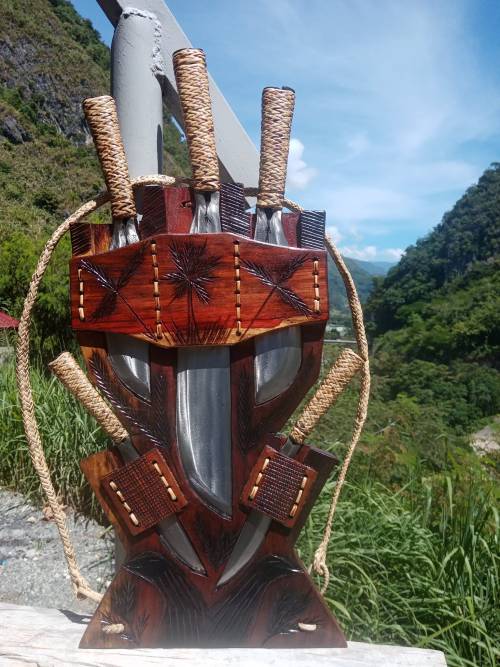
(Photo from Orinn Mongalini)

(Photo from Ifugao Artistic Blade)
Now for the fun part! You may be wondering why the handle is shaped the way it is, with that triangular opening near the base of the blade? Or perhaps you read the title of this post and you already know where this is going?

They double as spearheads! The handle itself is steel folded in to create a hollow socket, allowing the hinalung to be mounted on a wooden shaft, turning it into a spear. Supposedly, this spear-form was used for hunting. You can see the hollow socket more clearly here:


(Blade by HanYan Blades)

(Screencap from a video by AJ Blade Reviews testing the blade as a spear; Blade by Lakay Paul Dulnuan Sr.) As mentioned previously, the Philippine Cordilleras were never conquered by Spain, and as such were able to carry their traditions with a little more ease into the present day. It is very much apparent in the blade culture. Present-day smiths in the Cordilleras still forge hinalung, some of them stating they do it in the traditional way, others admitting to hewing to more modern methods.

(Antique from the Peabody Museum of Archaeology and Ethnology)

(Modern build by Lakay Pabian, photo by Ramon Bathan) Like I said before: Blade culture is alive and still developing. One of the Five Major Mahamandalas of Gubat Banwa pays homage to and gleans inspiration from living cultures like those I mentioned here. If you want to know what the first half of that sentence means, check out the game and its Kickstarter!
The Gubat Banwa Kickstarter launches in 5 days! Check it out here:

I've watched this game be started, written, and developed by like- one guy, who just managed to drum up enough interest and meet enough people willing to help shape the dream, and make it what it is today. It could not have gotten this far without all of them. Still, it remains a very small team of creators from the global south, with very limited resources. We would dearly appreciate any and all help in getting the word out about the game!
The Seventh Blade: Kalis - Bleeding Edge
And so- in the end- the wheel must turn, and a new day must usurp the old. Perhaps then, these long-fallen flowers will feed the soil, and nourish a new bloom. Perhaps the fire will find home in the bleeding rivers and cauterize the land, and the steam will rise into skies of the clearest blue. Perhaps our songs will be of triumphant yesterdays, hard-won and now bearing fruit. But we are Kadungganan- we do not sit idly to await the dawn. We claw at heaven to bring forth our own tomorrow! One more day until the launch of the Gubat Banwa Kickstarter! Fight for another day in the turbulent fires of the Sword Isles, carving out your own story by blade and sheer will in this tactical martial arts TTRPG, inspired by the thousand, thousand colors of Southeast Asia.

I've been posting weapons I've drawn for the game to count down the final week before the launch. This was supposed to be for Swordtember, but the deadline had to be pushed back. 7/7 blades, ending with the KALIS

This blade adorns the logo of Gubat Banwa, at once uniting and splitting in twain. Kalis refers to a number of uniquely Philippine variants of the more widely known collective of kris blades, which appears in several forms across Southeast Asia.

(Diagram by Lorenz Lasco) What separates Philippine kalis from kris seems to be an answer with multiple facets. Some say it's a linguistic matter, others say kalis refers specifically to certain blades from the Sulu archipelago.
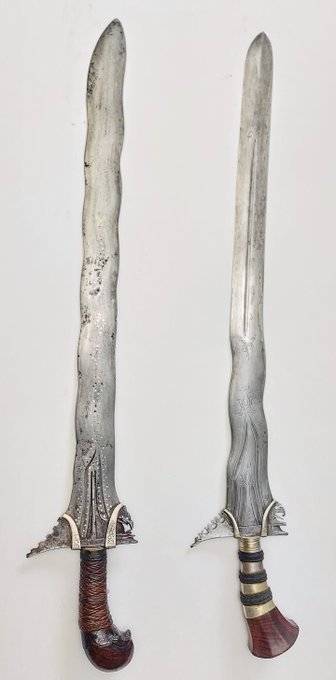
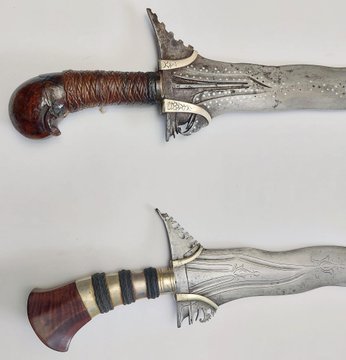
(Photos from Raymundo Lucero)
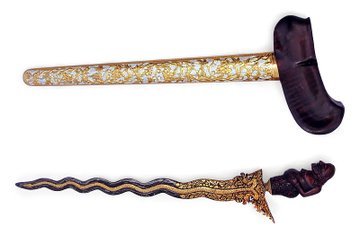
(For comparison, an Indonesian kris) Admittedly, the kalis is a bit of a blindspot in my knowledge. I've done what research I can, and asked those who know better, but I exist a considerable distance away from where these blades belong- physically and culturally. This is, perhaps, where I will be most prone to making mistakes of fact with the information I present. If I make any mistakes, please do not hesitate correct me!

(Photo from Zambasulta Pakukus) On the heels of that disclaimer, let's take a look at the blade. This is definitely one of the most beautiful weapons I've ever had to draw. Philippine kris/kalis tend to be longer and more "sword-like" than those of our neighbors.


(Photos from Johnwick Cabrera) The hilts tend to differ depending on who makes them. Some sport what might be cockatoo/"kakatua" bird-head hilts, some have very ornate junggayan hilts, some feature okir carvings, some are more rudimentary.

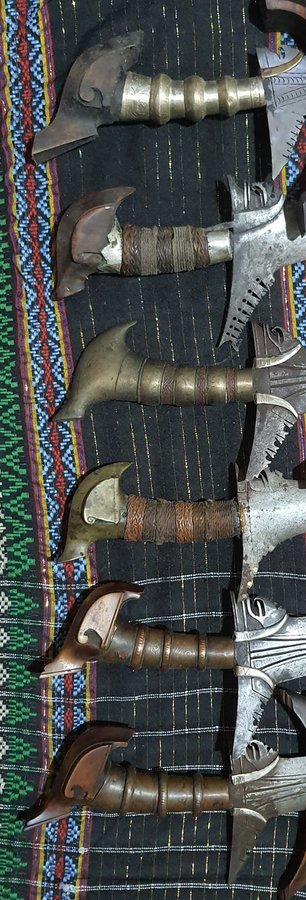
(Photos from Dennis Andrew Golez) The blade is used by several peoples in the south Philippines, including the Maranao, the Tausug, and the peoples of Maguindanao. I am most definitely missing a few groups, this is not an exhaustive list. There are differences between the way they build hilts and assemble blades that I don't feel qualified to speak about. And yes, the blades are like that because they are an assembly near the handle.

(Photo from Sulu Utak Shop) Apart from hilt shape and assembly, variations occur in blade thickness, ornamentaion, presence and type of okir carvings, number of curves or seko (odd numbers), length (kalis sundang = "swords", kalis gunong = "daggers") Actually- you know what?

(Photo from Richard Hudson) Since this is the last one in the countdown, I'm going to do something different. I invite you to find the answers yourself. That is part of what Gubat Banwa is meant to be: an invitation to engage in a fantasy setting centered on our cultures, so you can tell stories built on our terms. The cultures in the Sword Isles are NOT the cultures in the real world from which they draw inspiration. It is very much still a fantasy setting. But part of engaging with the setting in good faith is doing your own learning, on things for which you are not owed an explanation. Curiosity rewards the adventurous. The kalis is well-researched. If you're curious about something, you'll find the answers. You don't need me to hold your hand.
Instead, I'm just going to show you some of the coolest kalis I've seen.


(Silver and ivory-hilted kalis from the NCAA) A (relatively) simple but gorgeous build by a modern smith.

(Blade by Zambasulta Pakukus) A pair of kalis from a smith in Zamboanga.


(Blade by Panday Onsboy Maktar) Silver-hilted kalis from Sulu.
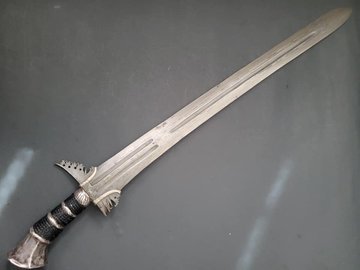

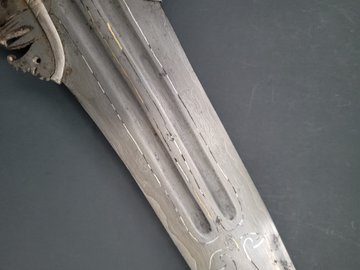
(Photos from Arma Filipinas; Polished by the "Blade Barber") Kalis with some gorgeous carvings on it.

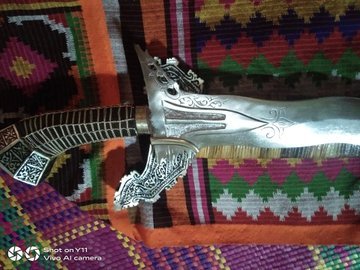
(Photos from Sulu Utak Shop) Kris inlaid with a brass naga.

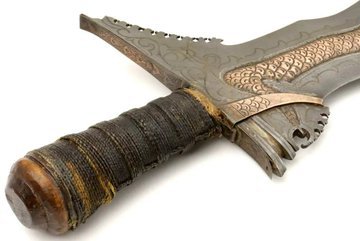
(Photos from Ron Zambaranno) Kalis rehilted by a Lumad group- uncertain which group. Supposedly, the Lumad would take kris they captured from enemies, disassemble them, and rehilt the blade.

This one appears to have a blade that looks like most of the kalis we've seen, but with a hilt similar to Indonesian or Malaysian variants.
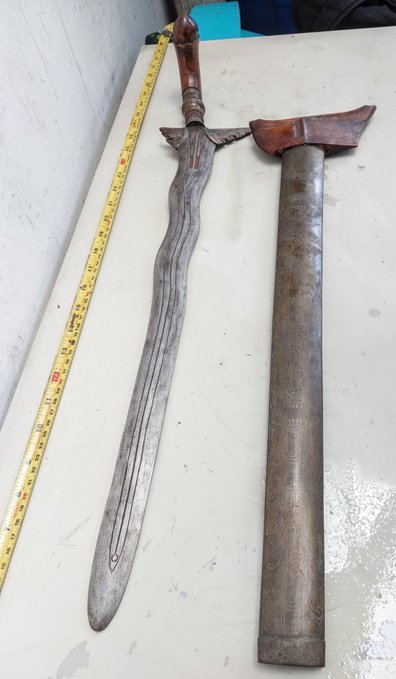
(Photos from Raymundo Lucero) Antique Moro kris sundang with a hilt made of fossilized mammoth tooth, ornamented with a silver coin from the 1700s. A personal favorite, as I used the hilt as a reference for one of my favorite designs.
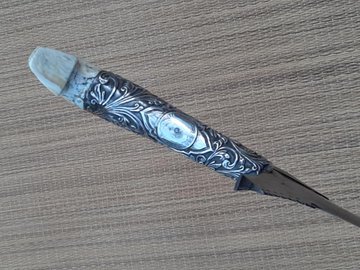
(Photo from Richard Hudson)
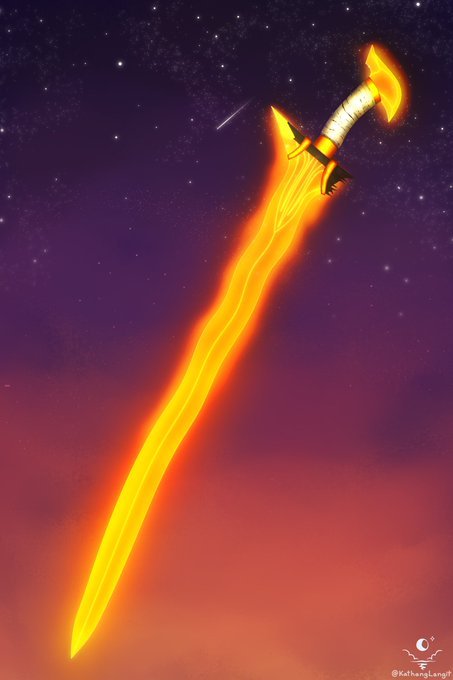
(Art by yours truly) As with the panabas, the people who make and use the kalis are still around. There are bladesmiths, scholars, practitioners of Moro Fighting Arts, historians, and just people who live alongside these blades who can tell their own stories better than I ever could.

(Photo from Richard Hudson)
I hope this and all the other threads I made inculcated an interest in some of you- even those who just look at the pictures (I see you)- to look into these blades yourself. Do your due diligence, treat people with respect, and approach what you are unfamiliar with in good faith- and you should be well on your way to learning more than you thought there ever was to know.
The Gubat Banwa Kickstarter launches in 1 day! Check it out here:

A very special thanks to GB team-member onefloor who helped expand my knowledge on this blade. This legend scores the music for Gubat Banwa, check them out here! This will be the last blade post I do for the promotion. I'm going back into the hole I dug in the ground to work on the rest of the weapons I'm drawing for this game. If there's interest, I might do another series of 7 before the Kickstarter campaign ends. Anyway, help us get the word out, small team of creators from the global south, too broke to advertise, etc. etc. you know the drill by now if you've read the other posts. Until next time! Until glory!
